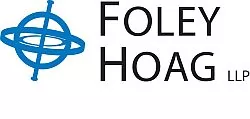- in South America
- within Media, Telecoms, IT and Entertainment topic(s)
Key Takeaways:
- The One Big Beautiful Bill Act will create a sea change in the healthcare landscape.
- This law will make significant changes to federal healthcare programs, especially Medicaid's financing and eligibility requirements.
- With large reductions in healthcare funding anticipated for providers and millions of people expected to lose their health coverage, stakeholders should become familiar with the changes and develop strategies for navigating the expected impacts.
President Trump signed into law the One Big Beautiful Bill Act (Pub. L. No. 119–2) on July 4, 2025, marking the beginning of a new era in healthcare law in the United States. Congress passed this legislation using the budget reconciliation process, which allowed the bill to pass in the Senate with a simple majority vote. In both chambers, the bill passed with votes cast mostly along party lines. The Congressional Budget Office estimates that by 2034 the law will reduce Medicaid spending by an estimated $911 billion and increase the number of uninsured people by 10 million.
In the coming years, this landmark legislation will make sweeping changes to federal healthcare programs, including Medicaid, the Children's Health Insurance Program (CHIP), Medicare (to a lesser extent), the Affordable Care Act (ACA) premium tax credits (APTCs) and health savings accounts (HSAs). The comprehensive overview of the healthcare provisions in the recently enacted law accompanying this alert is intended to provide you with a summary of the law's key provisions and help you understand the significant implications these changes will have for the healthcare ecosystem in the United States.
The provisions summarized represent some of the most significant changes to Medicaid expansion and coverage through the ACA's Marketplaces since the ACA was enacted in 2010. The law includes a broad range of reforms aimed at reducing federal and state spending, reshaping eligibility and benefit structures, and enhancing program integrity policies.
For example, under Medicaid and CHIP, states must now conduct bi-annual eligibility redeterminations for certain adult populations and adhere to new limits on retroactive eligibility. Work and community engagement will soon be required for most adult Medicaid beneficiaries. State financing arrangements for generating the non-federal share of Medicaid funding will be greatly curtailed. The law also restricts Medicaid, CHIP, Medicare and APTC eligibility for non-citizens and narrows the scope of federal funding for clinics providing certain reproductive health services.
This law further amends the ACA by tightening eligibility for premium tax credits, introducing stricter verification and enrollment rules and eliminating repayment caps for excess advance premium tax credits.
The law also provides for a temporary payment increase for physicians under the Medicare program in 2026, and health savings account rules are expanded to allow for greater flexibility, including the permanent extension of the telehealth safe harbor and the inclusion of bronze and catastrophic plans as qualifying high-deductible health plans.
Finally, an investment in rural health was key to garnering sufficient support for the law's passage. The creation of the $50 billion Rural Health Transformation Program is intended to provide funding to states to support rural hospitals, expand access to care, invest in technology and workforce development, and promote innovative care models tailored to the unique needs of rural communities.
Taken together, these changes represent a fundamental shift in the federal healthcare landscape. For example, providers will need to adapt to new requirements and could see an increase in patients without health coverage, while state agencies are likely to face significant operational changes in eligibility determination and program administration. Federal healthcare program beneficiaries, especially those in the Medicaid expansion population and non-citizens, will experience new eligibility standards, cost-sharing obligations, and, in some cases, reduced access to certain benefits.
We encourage all stakeholders to review our summary of these provisions carefully and to reach out with questions about how the One Big Beautiful Bill Act may affect your organization or the populations you serve.
The content of this article is intended to provide a general guide to the subject matter. Specialist advice should be sought about your specific circumstances.
[View Source]





